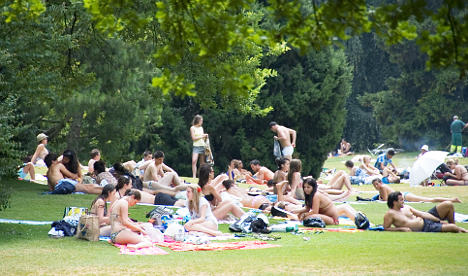MeteoSwiss, the national weather office, warns that the mercury is expected to soar to 36 degrees in Zurich, Basel, Geneva and the canton of Valais on Sunday.
Hotter than normal weather is forecast to start on Friday with the arrival of warm winds originating from North Africa and Spain.
Conditions will be extremely dry and sunny with little chance of relief from thunder storms, MeteoSwiss says.
Warm weather already enveloped much of the country on Wednesday, with a high temperature of 33.3 degrees recorded in Basel.
A rainstorm front brought temporary relief early on Thursday dumping more than 20 millimetres of precipitation in the central and eastern foothills of the Alps.
The heatwave is expected to last until at least the middle of next week, possibly longer.
Such weather in the second part of August is becoming increasingly common in Switzerland.
Temperatures have exceeded 30 degrees several times in this period in 2001, 2003, 2009 and 2011, although such cases were rarer in the 1980s and 1990s.
The warm weather will also affect areas in the mountains where tourists often seek refuge from the summer heat.
MeteoSwiss expects the zero-degree limit will reach around 4,600 metres over the weekend.
During periods of extreme heat, health officials warn that elderly people and infants should stay indoors to avoid walking about during the hottest period of the day.
Relatives are also encouraged to ensure that they provide support to vulnerable members of the family during such weather.




 Please whitelist us to continue reading.
Please whitelist us to continue reading.
Member comments